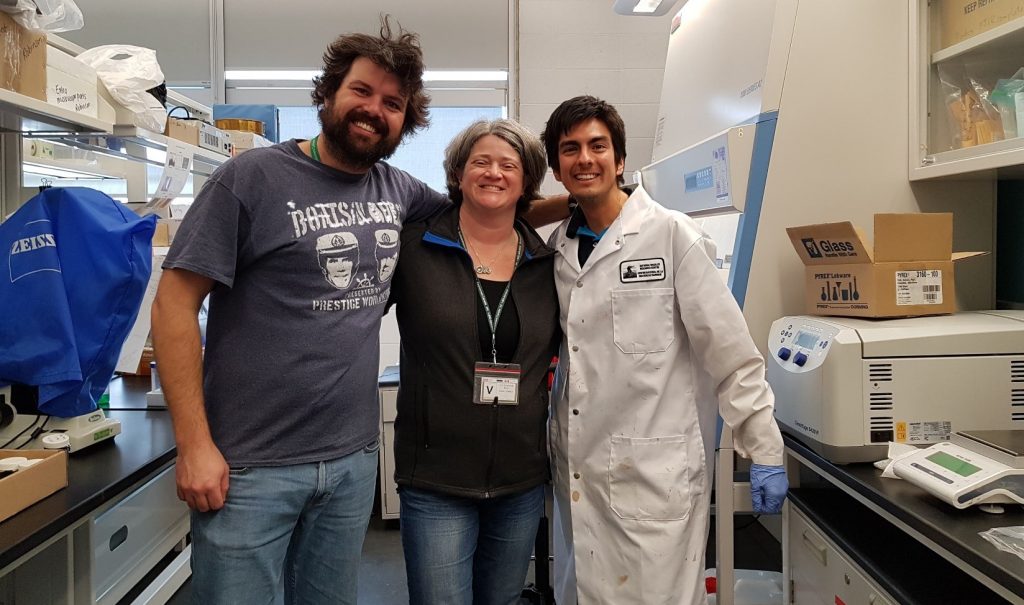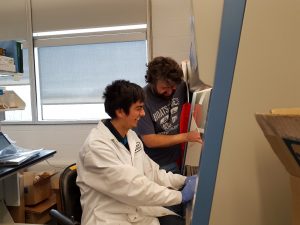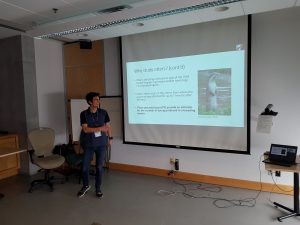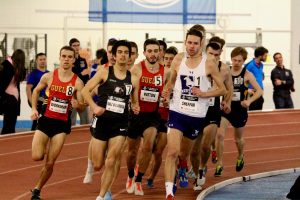What I did during Reading Week: Science edition

From left to right: Phil Thomas (Environment Canada), Allison Holloway and biology-physiology student Sergio Raez-Villanueva in the National Wildlife Research Centre in Ottawa
Hi! My name is Sergio Raez-Villanueva and I’m an undergraduate Honours Biology-Physiology student-athlete who also happens to be very passionate about research. For this reason, I’ve been working since the summer after graduating high school in McMaster’s Obstetrics & Gynecology Department under the supervision of Dr. Alison Holloway. Our work focuses on understanding the impacts of environmental insults on fertility and reproductive success.
I am a big believer that learning expands beyond the four walls of a classroom and, being in my third year of studies, I decided to take a work-placement course under the supervision of Phil Thomas at Environment and Climate Change Canada as a credit for my degree. Fast-forward to reading week, and I now find myself in Ottawa doing research and presenting my findings at the National Wildlife Research Centre (NWRC).

Let me explain. The world of research requires collaboration between scientists to make meaningful contributions on real-world issues. My supervisor in Ottawa, Phil Thomas, is involved in the government’s oil sands hunter-trapper harvested wildlife toxicology monitoring program.
I am working with Phil to explore the effects of oil sands activity in Northern Alberta on reproductive success of wildlife living in the region. This is imperative for our understanding of population health but is also an important question for the Indigenous communities living in Northern Alberta as these wildlife species are culturally important and economically significant for the community members.
In addition, impaired reproduction in wildlife may be an indication that similar things are happening in humans. My work with Environment Canada is part of a larger project to understand how the chemicals from the oil sands industry may be impacting reproductive health of humans and wildlife living in the Alberta oil sands region.
As part of this course, I worked in both Hamilton and in Ottawa. At McMaster, I studied the effects of chemicals from oil extraction on key markers of placental cell function using cell lines. I never knew that my work as a research assistant in the Holloway laboratory would also allow me to travel to expand my knowledge, techniques and skills through Environment Canada.
To link this research with wildlife, I travelled to Ottawa to work with Phil in the NWRC. I was shown how a government laboratory operates and Phil had me deal with different tasks in his daily job that ranged from administrative duties, to doing wildlife inventory in giant walk-in freezers (colder than -20 °C!), to performing otter dissections.
I also presented at a seminar during my time there to scientists in the NWRC to outline the research and data we have gathered thus far. This was my first time presenting to a government group, and it was also streamed online to other government organizations around Canada – a bit nerve-wracking at first, but an awesome experience.

All in all, I learned more than I could have imagined and did more than I had expected. More importantly, it has made me understand how essential it is to collaborate and work in a team, and how individuals from different fields contribute to a common goal. I am beyond grateful for McMaster University, the NWRC, and Environment Canada for the opportunities and learning experiences that I was given this reading week.
As a varsity runner for McMaster, our indoor provincial competition known as the Ontario University Athletics (OUAs) Indoor Track & Field Championship happened to fall during the weekend before the reading week ended. Travelling back from Ottawa, I competed in both the 3,000m and 1,500m events at York University. I placed sixth in the province for both events and will be competing in U Sports (university nationals) in two weeks in Winnipeg.
I thank my coaches, Paula Schnurr, and her husband, Peter Self, in addition to all my teammates. Their support means the world to me. I will seek to improve my times and give an even greater effort. I am always proud to represent McMaster and proudly wear the Marauder singlet as I give my best in this competition.



